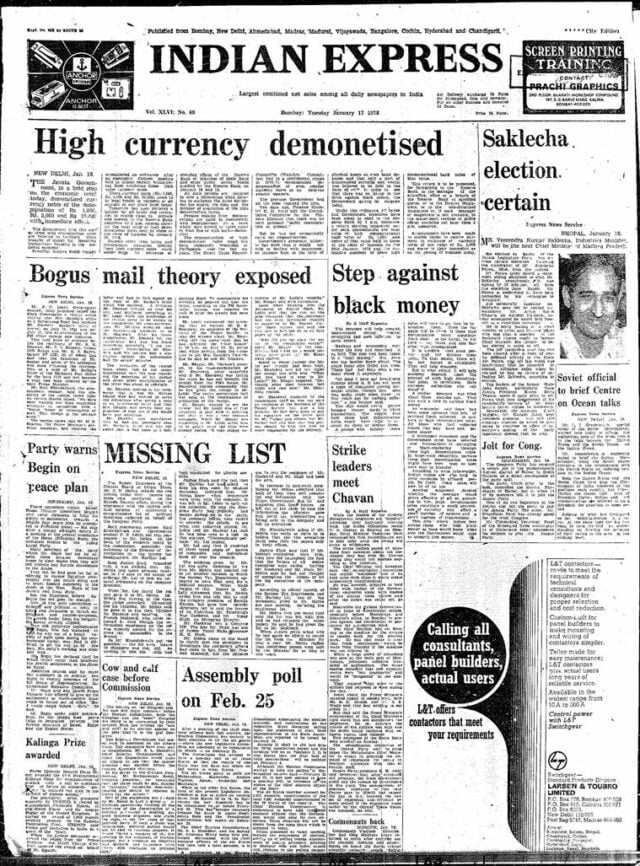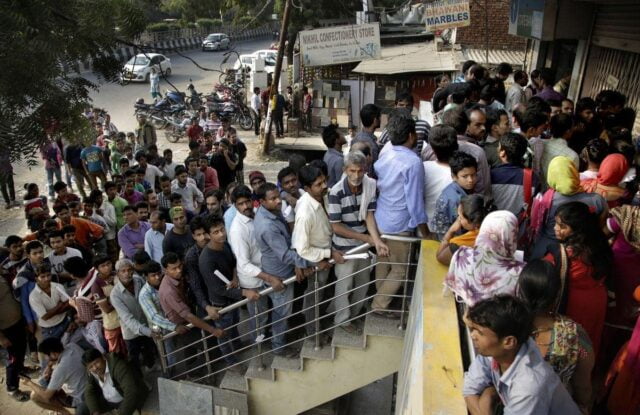Painted varnishes of anxiety and hysteria still reside on the subconscious mind of Indian’s on the mention of abrupt demonetisation of high valued Rs 1000 and Rs 500 notes on the night of November 8, 2016. Today, on the fifth anniversary, we look at the lived experiences of the cash concentrated unorganised sector and marginalised communities engulfed in the fury of parliamentarian decisions. How did they adjust to economic recession, abundant liquidity crunch and unemployment? What happened to the savings kept below mattresses or tin jars which would have lost value within four hours of the announcement?
Renu, a house-help from Bhagalpur said, “We didn’t have a television in our home, someone in our locality was shouting around 8:30 pm “Kal se notes nahi chalenge”(no value of notes from tomorrow). I didn’t know of this demo…word. I reached out to the house I worked for help, and they handed me my upcoming salary! They were in haste and just said 500 and 1000 rupees would not work, but I was standing at the door clutching those notes. Many days passed till we knew what was happening.”

History And Geopolitics Of Demonetisation

Demonetisation intended to prevent black economy, corruption and terror funding. But was this the correct method? Historically, no nation has had definite positive impacts of demonetisation be it Zimbabwe or the Soviet Union. India in 1978 had a ban of Rs 1000, 5000 and 10,000 notes under the Morarji Desai ruling body with the aim to stop black currency. It had a negative consequence. But was limited spatiotemporally as only 15-20% cash was withdrawn; the banking sector was not widespread in India. In 2016, 85% of the circulatory 18 lakh crore currency came outside legal tender within a day; many banks and ATMs propagated the process.
The Banking System And Generation Of Currency
But are the banking sector and ATMs abundant in India like the countries of Brazil or Japan? The contradiction of the availability of public resources in rural and urban areas is very evident in India. The new currency for exchange was only available at 4% against a higher 80-90 % deposition rate of cash.
“In November frequent restrictions were put on cash withdrawals and depositions. I could finally receive the exchange of my Rs 6000 but in denominations of Rs 2000 on the fifth day after a long queue! No one could give me a change of such a range. There was also huge confusion as many new fake currencies were printed.” said an anonymous migrant daily wage worker.

Banks create majority revenue through interest rates of loans. It never has their entire income physically present. The method of illusion income works as rarely everyone tries to withdraw their money from the bank on the same day. Post demonetisation, the RBI and commercial banks were immersed in this rare crisis. The disruption impacted the GDP growth rate in the long term, which reduced to -8 % in 2020.
Also Read: In Pics: World Bank Says India Has Recovered From Demonetization And GST Impact, But Is It True On Ground?
Small Scale Industries, Unemployment And income Loss
But with demonetisation, there was a huge demand for cash by those in the unorganised sector for daily work, and remonetisation of the total extracted money took many months. Banks provided very few loans as they were sceptical of the income generation by small industries and self-employers. The booming economy post-globalization with inclusivity of small industries came to a standstill due to market conditions.
The supply of money was less in the economy, consumers demanded fewer goods from the market, the small industries had less capital for investment while daily commercialism was disturbed. Inventories piled up, perishable goods and harvest sold below the remunerative price. There was a meagre generation of income, local industries shut down, many workers were left jobless. Some migrated back to the villages, the lands were already overutilized and had surplus labour. Lack of job opportunities in the organised sector as well as instability in the unorganised sector marginalised those below and near the poverty line to absolute unpredictability of future sustainability.

Digitalization, Economic Hierarchy And Non-recognition of Illegal Assets
Digitalization of monetary transactions, the new objective declared by the government came as a response after discerning the failure of banning notes. But in India, the literacy rate and technological adaptability are low; many people are economically deprived to avail phones or have smartphones with the transaction feature. The rich or middle-class who transacted by UPI or card had less difficulty during demonetisation, while others who under voiced their income redistributed it through various accounts, shell companies, buying real estates and assets like jewellery. It was observed during demonetisation, there was a rise in the deposition of cash in many Jan Dhan accounts!
In October 2021, a visually impaired old man named, Chinnakannu, from Chinnagoundanur village in Tamil Nadu petitioned to exchange his recently found lifetime savings of Rs 65,000. He claimed he was unaware of demonetisation as he was suffering from an illness a few years ago. The currencies are in earlier Rs 500-1000 denominations.
Post note ban there has been an increase in both digital payments and cash circulation, especially during the pandemic. The idea of demonetisation couldn’t obstruct the black economy because it focused more on cash expenditure than other forms of assets used illegally. With no proper implementation technique and quick responsiveness, it became a part of the bruised memory of many.
Image Credits: Google Photos, India.com, BBC
Source: The Print, Macrotrends, The Hindu
Find The Blogger: @debanjalidas15
This post is tagged under: An Ode To Demonetisation, demonetisation, demonetisation 2016, demonetisation impact, Indian demonetisation, why did the demonetisation happen, small scale businessman, unorganised sector, informal sector, note ban, five years of demonetisation, cash economy, digitalisation
Other Recommendations:
PROBABILITY OF BREAST CANCER IN MEN: HERE’S ALL YOU NEED TO KNOW ABOUT IT































